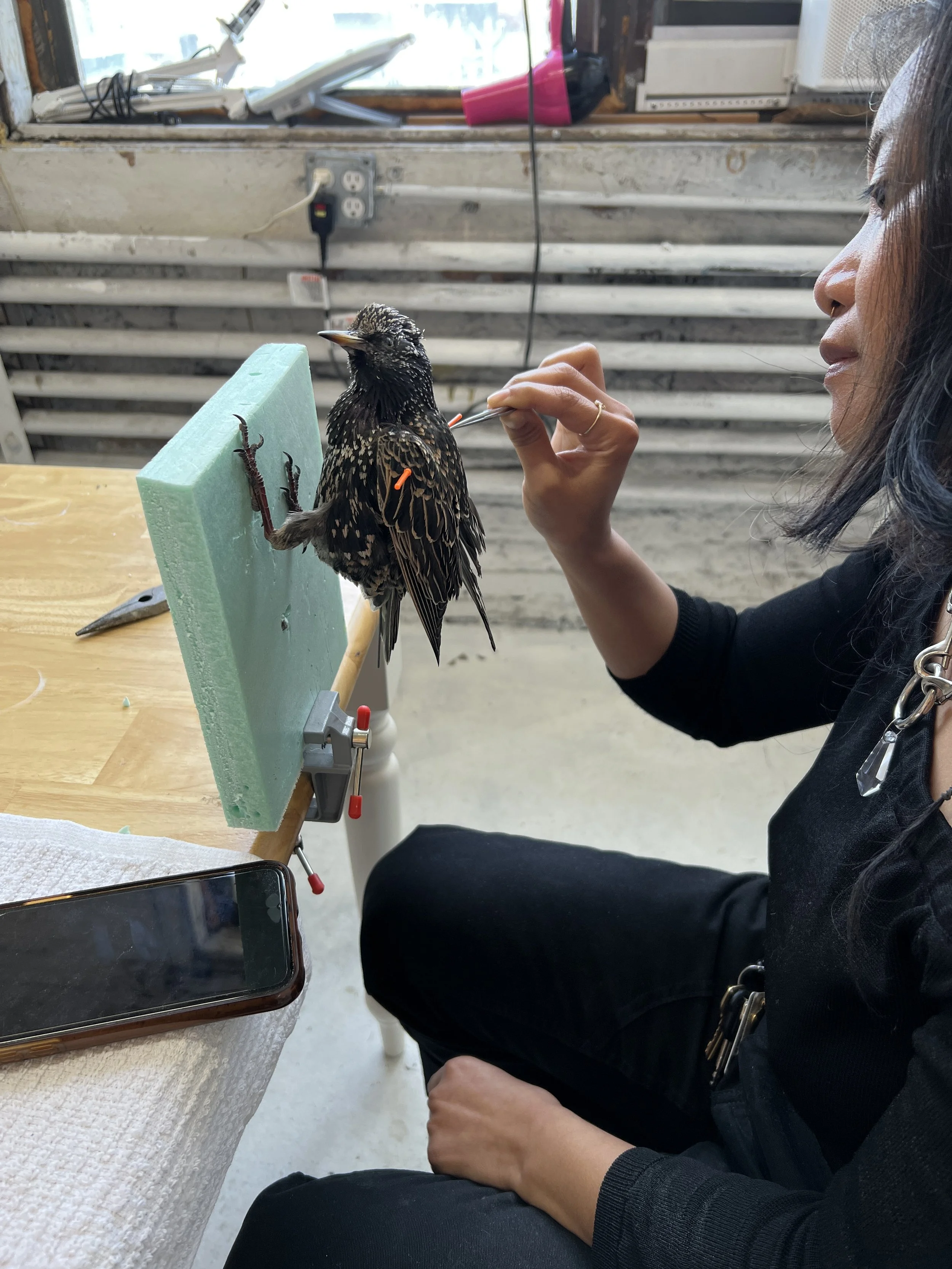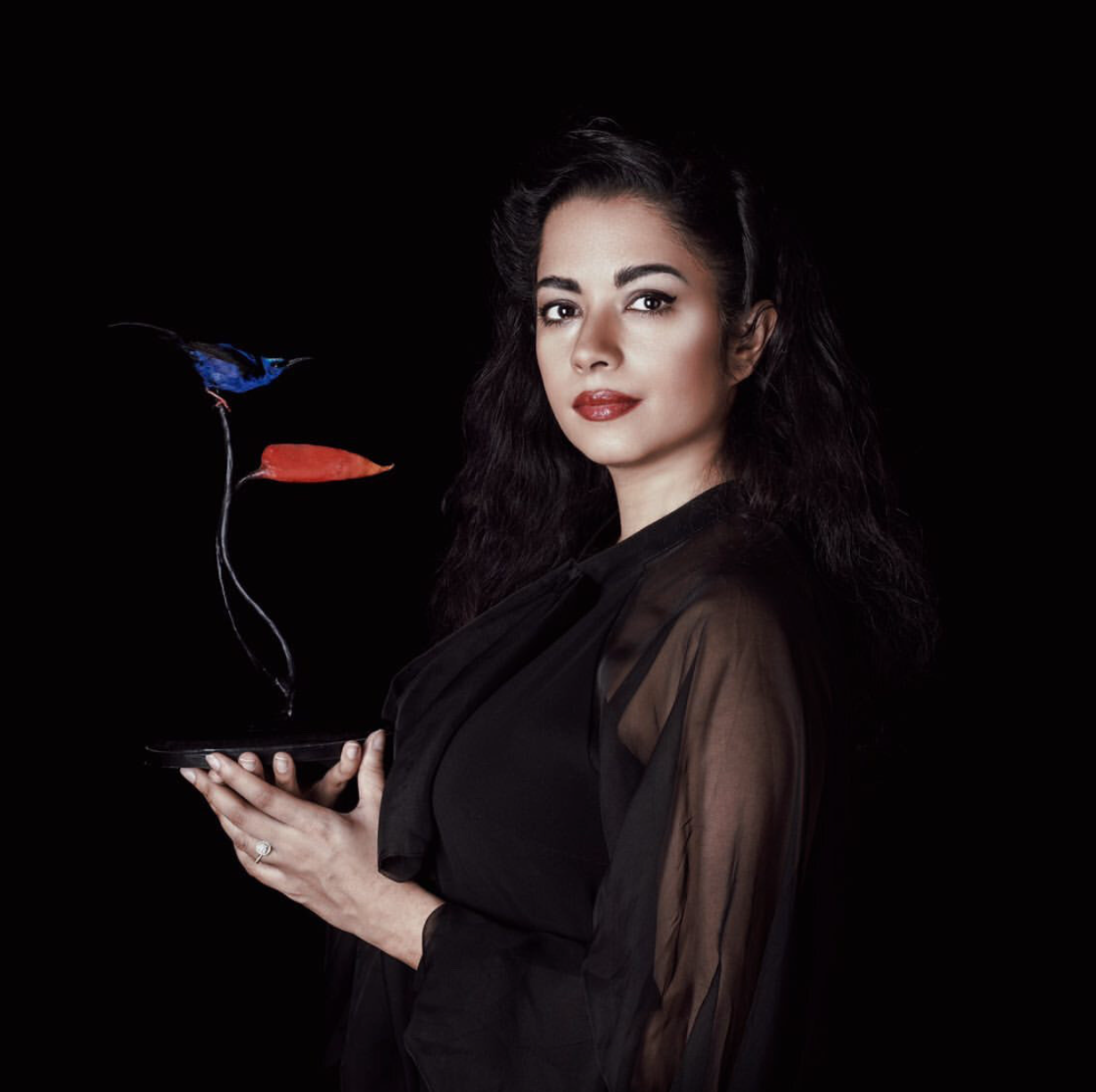
Gotham Taxidermy: Starling
We are incredibly excited to host Divya Anantharaman from Gotham Taxidermy here in North Saanich at our tannery.
Divya is an award winning licensed professional preserving animals with honour and compassion, for clients ranging from museums, designers, gallerists, and collectors. She left the corporate fashion industry to pursue her love of natural history as the resident taxidermist at the Morbid Anatomy Museum, and has since built a following creating taxidermy, skeletal, and entomology displays, along with jewelry and wearable art, for anyone who finds wonder in the natural world.
And now, she’s gracing us on Vancouver Island with her presence - leading a two-day workshop on taxidermy of starling birds.
August 23-24, 2025 | 11am to 6pm each day
North Saanich, BC - north of the City of Victoria on the W̱SÁNEĆ Peninsula
$890 CAD ($650 USD) - scholarships for BIPOC available
Click the button below to sign up + scroll for more details.
In this class, we will learn about the fascinating anatomy of birds and traditional bird taxidermy. This class is designed for beginners with an interest in bird taxidermy. No matter the experience level, all are welcome!
Students will learn everything they need to create their very own bird taxidermy mount, from proper skinning, degreasing/washing, to sculpting, mounting, and finishing.
Our subject will be the European Starling (Sturnus vulgaris). Starlings are rumored to have been brought to North America first via Central Park in NYC by Shakespeare enthusiasts, but their real story involves many people who loved animals but may not have understood their impacts. In any case, they became prolific enough to compete with native birds, in some cases causing ecological stress. However, their eye-catching plumage-glossy, spotted, and iridescent, starlings enliven our cities. Their unwavering tenacity reflects a larger truth across species- making the most of a situation they’ve found themselves in.
This two day workshop will immerse students in every step of the taxidermy process.
All specimens are legally and sustainably sourced. no animals are harmed for the sake of taxidermy.
All students will go home with their custom made creations, instructions for maintaining their pieces, and newfound or nourished love of taxidermy.
From ancient Greek, "taxidermy" translates to "arranging skin" or “moving skin”. (“taxi”-moving or arranging, “derma”-skin). In traditional taxidermy, the preserved hide of an animal is mounted on a form so it resembles the animal as it was when it was alive. Aside from the skin or hide, all other parts of the anatomy (such as eyes, soft tissue, and other parts) are artificial or replicated.
Taxidermy is uniquely positioned as one of the most effective tools for wildlife conservation.
Conservation is not something exclusive to organizations and academia - history proves that the consistent actions of everyday people can create meaningful change.
CLASS POLICIES CHECKLIST by Divya
For safety and hygiene, no food, candy, gum, or smoking in class. Students are allowed to take as many breaks needed outside of the classroom for food, candy, gum, and smoking. Drinks are allowed in class but should be in a lidded container. Please, no intoxicants during class.
All specimens legally and sustainably sourced, no animals are harmed for the sake of taxidermy. Nothing is harmed for the sake of taxidermy. The animals we work with in class are naturally deceased animals, found animals, feeder animals that would otherwise be discarded, or discards from other taxidermists doing freezer cleanouts.
Taxidermy and conservation go hand in hand, and responsible sourcing is extremely important to me. This also means that specimen availability may vary, and specimens will have natural irregularities associated with these conditions.
By signing up for class, you recognize the risks associated with a taxidermy class- working with sharp tools and practicing safe specimen handling. You agree to follow the instructors advice, and will not hold the instructor or venue liable for harm.
All students must be over 18, unless accompanied by a parent, guardian, or other adult chaperone. There is no additional charge for the chaperone to attend.
Please feel free to bring your own props, adornments, or items for your mount.
Please bring a small box or bag to take your piece home.
Please do NOT bring your own raw specimens to the class.
Please note that all specimens in class have been professionally prepared by me-from skinning, cleaning, to tanning, and only the best condition specimens are selected for students ease and enjoyability. However, as specimens have passed from natural or unavoidable causes, there may be scars, small holes, damaged bones, chipped feathers, or other slight variations that are inherent with deceased animals, especially as many animals are found dead. These are not animals killed in prime plumage, and so “perfection” is not guaranteed. Animals are unique individuals, sourcing sustainably has inherent inconsistency, so there is no guarantee of specimen color, sex, size, or other elements. My practice is based on appreciating the animal as a unique individual, and not as a trophy.
Depending on the status of Covid and public health, and student or venue requests, we can set mask or testing requirements that are amenable to all parties.
If you are considering becoming a professional taxidermist after this class, wonderful!
The learning, experimentation, and connection to animals can be very fulfilling, and I am honored when my classes can provide any part of that. However, taking a class
does not equate to any licensing, voucher, referral, or other type of professional endorsement.
Venue accessibility info varies by location. Anneth farm is not wheelchair accessible at this time.






